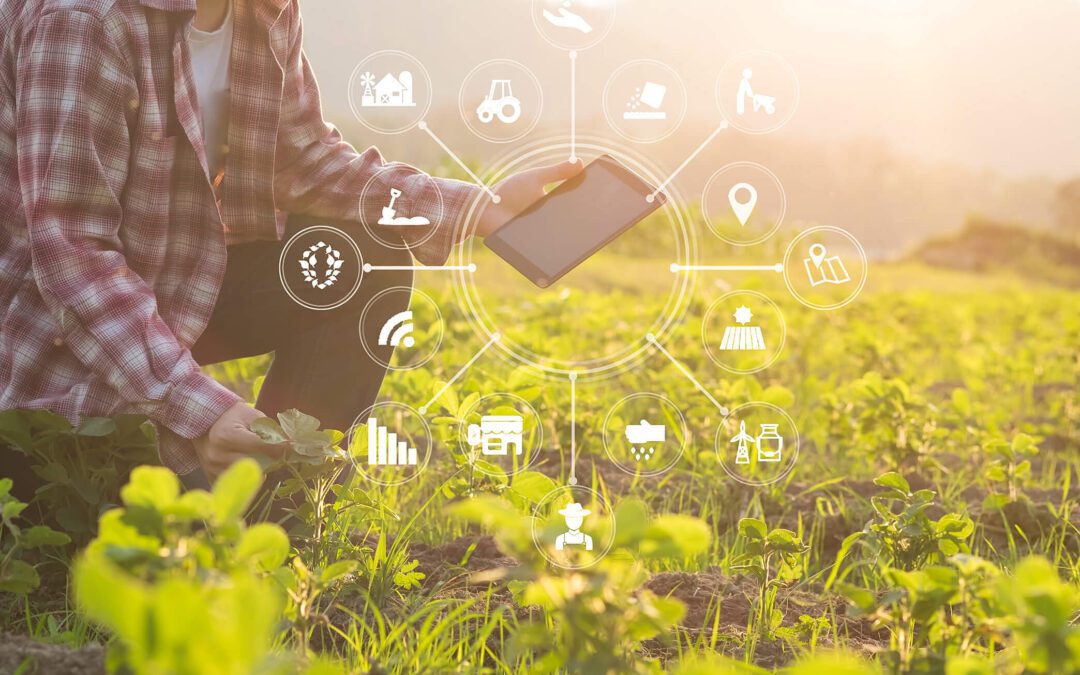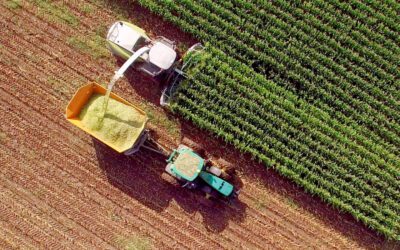Digital agriculture as a concept became recurrent in Brazilian agribusiness in recent years. However, although it is a widely discussed topic, it still raises doubts among many producers about its real effectiveness for business.
The truth is that agriculture's future is directly linked to this concept. This is because, in the current scenario of population growth, a need has emerged to expand food production. Thus, digital agriculture presents itself as a measure that will enable higher productivity, performance, and sustainability of crops.
Given the importance and urgency of this topic, we have prepared this article to discuss the digitalization of agriculture and the changes that this process has been causing. Read below and learn how to achieve higher productivity and efficiency in the agricultural production process.
Advantages of digital agriculture
Technological resources have been explored in different sectors, and also applies to agriculture. Technology contributes to the management of agribusiness and can even increase its productivity, profitability, and product quality.
The advantages attained through digital agriculture are diverse. Below, we will discuss the biggest ones so that you understand the importance of such modernization.
Productivity increase
The use of digital tools helps the producer know how to best use the soil and resources. The use of drones, autonomous equipment, and Big Data are some examples incorporated in agriculture. They have changed the way procedures and processes are carried out, generating an increase in productivity.
It is possible to use systems that issue alerts and notifications so that the producer receives the support he needs at each stage of production. This includes, for example, data on precipitation and a history of disease and pest control.
According to information from the 2017 Agricultural Census conducted by the Brazilian Institute of Geography and Statistics (IBGE), the use of technology in the field made it possible to increase harvests. A good example is the soybean crop, which in 2017 produced 3.4 tons per hectare, almost 30% more than in 2006—which is the date of the previous study carried out by the institute.
Higher product quality
By conventional methods, harvests of the same crop are treated uniformly. In digital agriculture, we are able to achieve higher precision, which allows producers to manage a productive field by the meter while considering the fact that each piece of land has different properties.
This way, it is possible to determine the planning according to the data and production history of each area. Thus, an improvement is obtained in operational performance and, therefore, in product quality.
Cost reduction
The goal of digital agriculture is to employ technological tools to solve the problems of crop inequality and increase their productivity without increasing costs. For example, before using the technology, a farmer would apply the same amount of resources to the entire length of his cultivation area.
However, by using precision tools, he is able to identify how to save on the use of resources in regions of greater fertility. By doing that, he saves and guarantees greater productivity.
According to the president of Abrapa, João Carlos Jacobsen, it is possible to attain a reduction in production costs of up to 30% with the application and use of the correct technology for each crop.
Production stages integration
Waste and losses can happen at different stages of production, either by improper handling, by incorrect storage of products, or trampling on them by machines. By integrating the productive stages, it helps to save time and avoid such waste.
Through technology, it is possible to chart schedules that are more efficient and avoid possible losses during transport, since the logistical processes of production are controlled.
Increased security
The possibility of production tracking increases security and prevents theft or loss of goods. The producer is able to monitor all the logistics of his products and, in case something happens out of plan, he can receive alerts in real time.
This allows for better decision-making and strategies that help overcome problems. Also, it guarantees the protection of the property, for example, through monitoring and surveillance of who enters or leaves the field. This way, it is possible to minimize the risk of possible theft of machinery, equipment, or products and supplies.
Common applications of digital agriculture
All stages of production can be benefited by technology. Agribusiness in Brazil has already undergone many changes with digital agriculture and several resources have been employed on properties to optimize work. Below, you will learn its main applications.
Crop planning
The pre-planting phase is essential for productivity. Because of this, technology can be widely used in crop planning. It can be used, for instance, in stock control to guarantee the acquisition of seeds, resources, machinery, and hiring.
The use of drones helps to analyze the property and study its areas. By cross-checking the obtained data, it is possible to better define the crop layout and achieve higher productivity.
Farm management
Besides the raw material itself, good suppliers, machinery, employees, and supplies are also important for good results. Therefore, all these elements must be properly managed in order to guarantee production fluidity and avoid losses or waste.
Technological resources can be used in the management and control of suppliers and customers, logistical processes, item acquisition, and people management. In addition, technologies like Big Data allow all this data to be integrated, which facilitates decision-making.
Identification and control of pests and diseases
Digital agriculture also has resources that the producer can use to identify pests and diseases that affect plant development and productivity. It also offers more effective control tools, such as nanotechnology and drones.
Weather forecast
Meteorological monitoring allows the producer to adopt strategies whenever necessary. Digital solutions provide alerts about precipitation, frosts, drought, among other situations that may affect crop productivity.
This way, the farmer is able to schedule the correct actions to ensure proper production care. Such technologies even help identify the best possible times to harvest while ensuring the highest product quality.
How digital agriculture is changing the sector
We are able to see the benefits of digital agriculture in all agribusiness sectors, but we selected three of them so that you can understand how technology has been transforming work in the field. Check them out below!
Sugar-energy industry
This industry employs the support of digital agriculture in all its production stages. Technology has been used, for example, to increase efficiency and productivity with:
- automated harvesters;
- software and applications;
- drones;
- artificial intelligence;
- resources and agents integration;
- information digitization;
- weather stations.
Grains and fibers industry
The production of grains and fibers presents several particularities and depends on the definition of the right time for spraying, dew control, and the appropriate humidity in the early hours of the morning, in addition to the observation of climate changes. All of this can be monitored by using digital solutions.
As is the case in the sugar industry, there are technologies that, in addition to such control, allow you to:
- manage the farm;
- adopt automated equipment;
- integrate systems, machines, and personnel;
- control logistical processes.
Perennial crops
Digital agriculture solutions for perennial growth are similar to those for grains and fibers. They also involve the resources that we have cited for the sugar industry, being benefited in the same ways in these two sectors.
Going further than that, we can use on-board computers and M2M technology, which allows the exchange of information between machines and connects them, which then allows us to obtain data in a more efficient and complete way.
As evidenced throughout this article, all agribusiness can benefit from digital agriculture. The adoption of digital solutions in crops increases productivity per hectare, guaranteeing more precision in management and reducing costs, which improves the profitability and viability of the sector.
Did you understand how digital agriculture is important for the future of agribusiness? Then, share this article with other producers on your social media!
Follow us on social media:




